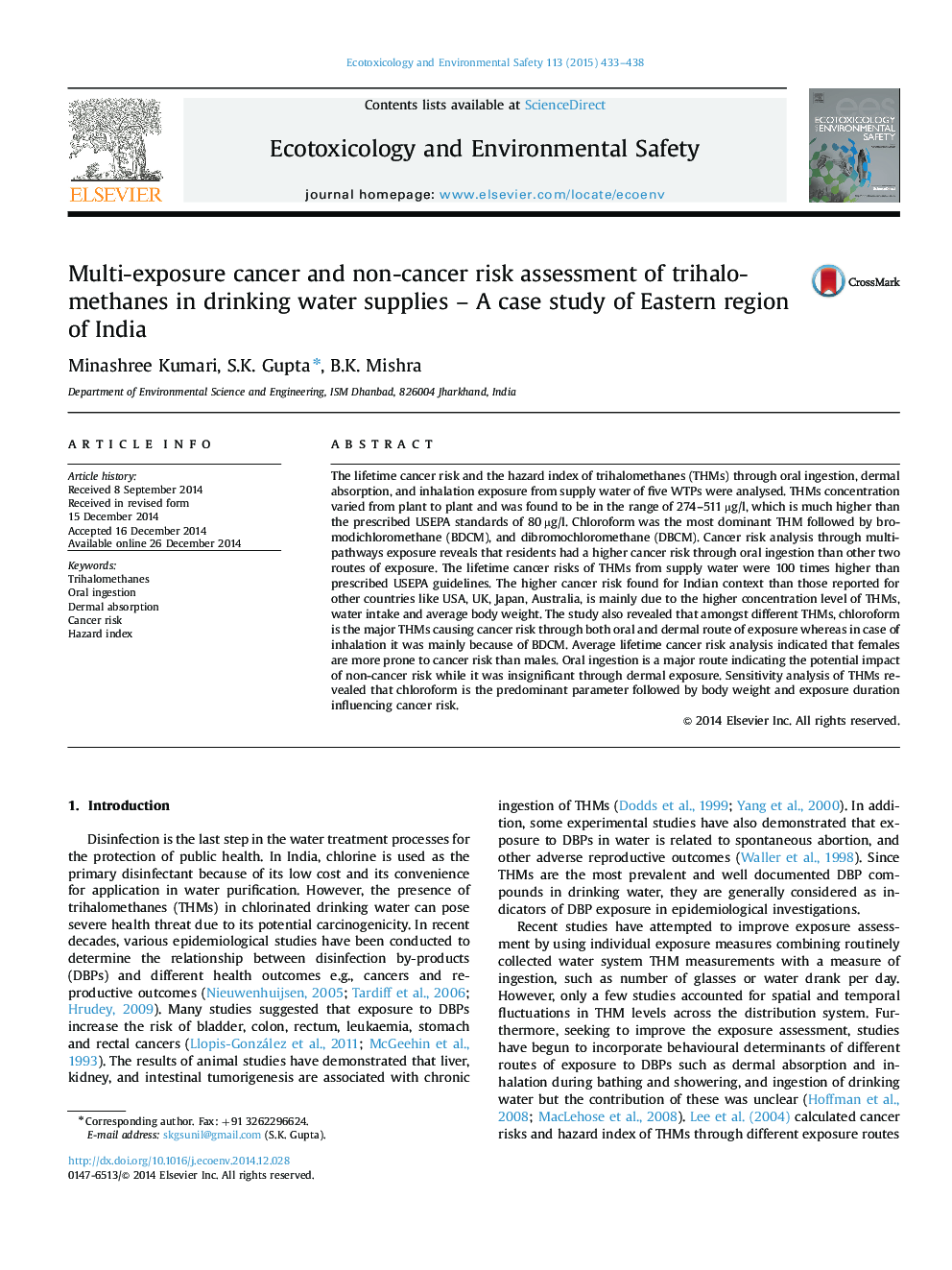| کد مقاله | کد نشریه | سال انتشار | مقاله انگلیسی | نسخه تمام متن |
|---|---|---|---|---|
| 4419715 | 1618950 | 2015 | 6 صفحه PDF | دانلود رایگان |
• THM levels in Indian context was found much higher than USEPA guidelines.
• Oral ingestion was found as the major pathway for cancer risk.
• Females are more prone to cancer risk than males.
• Sensitivity analysis revealed that chloroform is major factor for cancer risk.
The lifetime cancer risk and the hazard index of trihalomethanes (THMs) through oral ingestion, dermal absorption, and inhalation exposure from supply water of five WTPs were analysed. THMs concentration varied from plant to plant and was found to be in the range of 274–511 µg/l, which is much higher than the prescribed USEPA standards of 80 µg/l. Chloroform was the most dominant THM followed by bromodichloromethane (BDCM), and dibromochloromethane (DBCM). Cancer risk analysis through multi-pathways exposure reveals that residents had a higher cancer risk through oral ingestion than other two routes of exposure. The lifetime cancer risks of THMs from supply water were 100 times higher than prescribed USEPA guidelines. The higher cancer risk found for Indian context than those reported for other countries like USA, UK, Japan, Australia, is mainly due to the higher concentration level of THMs, water intake and average body weight. The study also revealed that amongst different THMs, chloroform is the major THMs causing cancer risk through both oral and dermal route of exposure whereas in case of inhalation it was mainly because of BDCM. Average lifetime cancer risk analysis indicated that females are more prone to cancer risk than males. Oral ingestion is a major route indicating the potential impact of non-cancer risk while it was insignificant through dermal exposure. Sensitivity analysis of THMs revealed that chloroform is the predominant parameter followed by body weight and exposure duration influencing cancer risk.
Journal: Ecotoxicology and Environmental Safety - Volume 113, March 2015, Pages 433–438
